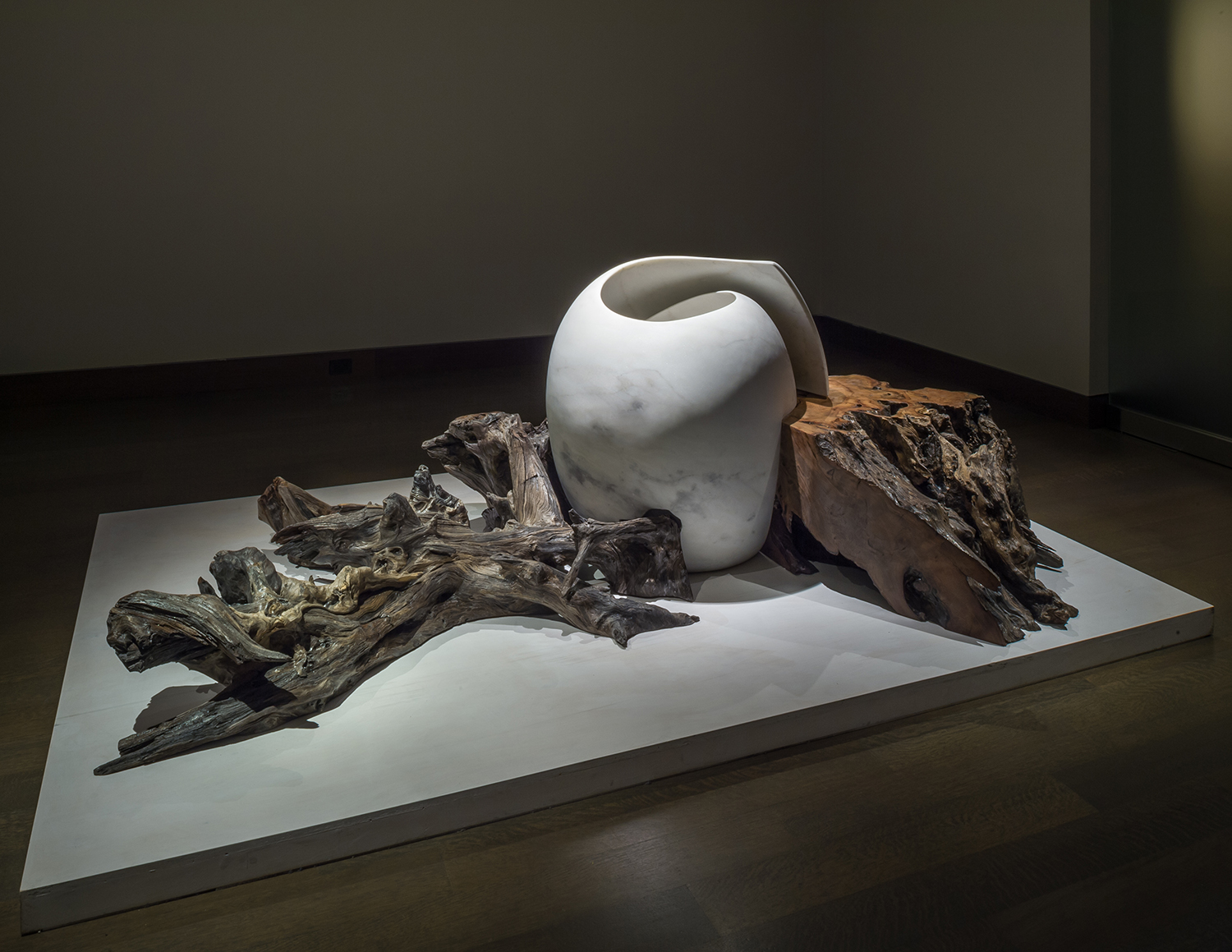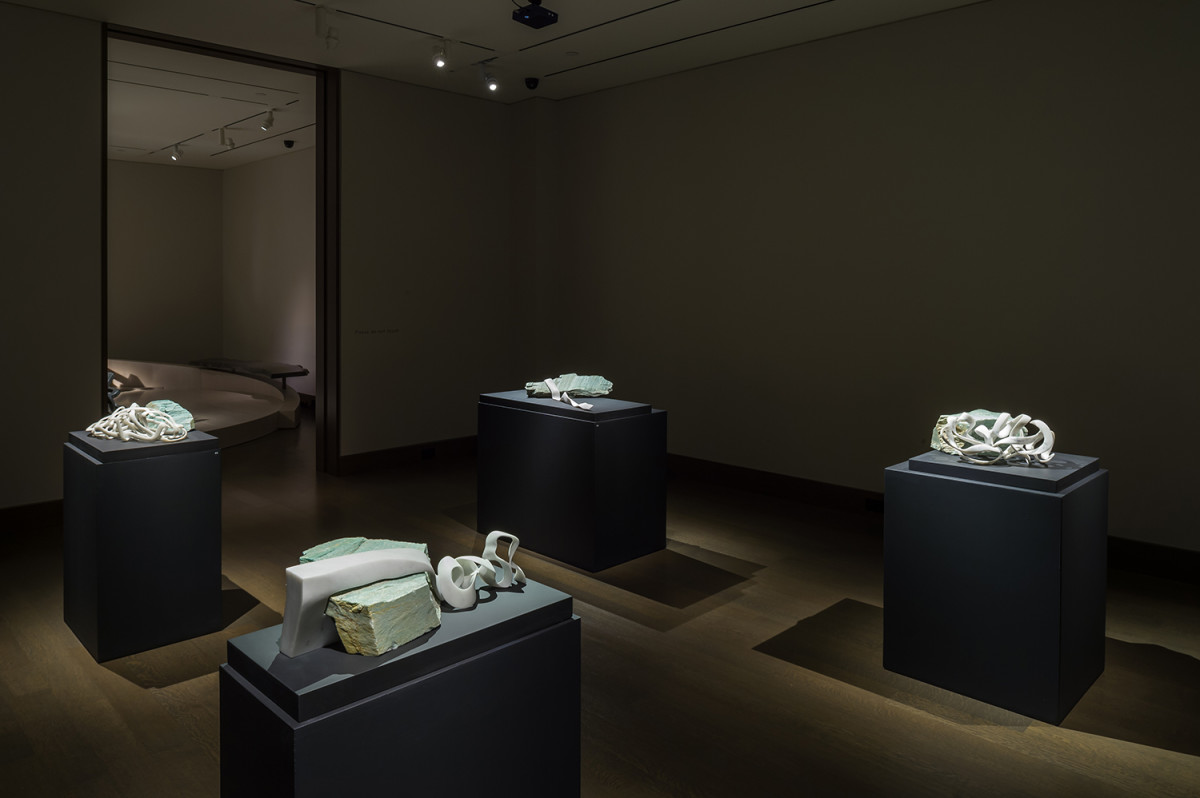Art & Exhibitions
artnet Asks: Elizabeth Turk Talks Marble
Why work with medium of Michelangelo in 2015?

Why work with medium of Michelangelo in 2015?

Artnet News

Sculptor Elizabeth Turk is a master of marble, manipulating it into revealing gentle, swooping forms that seem light as air. Her pieces are full of delicate nooks and crannies, sometimes evoking an elegant filigree, sometimes an earthy nest. The richly traditional medium of marble chose her, not the other way around, she explains, and it’s both her burden and joy to carve out a contemporary voice within it.
Her latest exhibition “Tensions” is currently on view at Hirschl & Adler Galleries in New York through October 24. In her interview with artnet News, Elizabeth Turk discusses her show, her relationship to the earth, and why she’s chasing something bigger than herself.
When did you know you wanted to be an artist? Did anyone influence you towards the arts as a child?
Drawing and reading were always ways in which I could lose myself, even as a child. It was not a desire to be an artist, but a passion to spend my days making things which chose me. My family hoped I would be in art but I was resistant. They influenced this direction, no doubt, but there are so many interesting pursuits in life and I feared being an artist would be too brutal. Who would choose a career designed to reveal inner reflections? It’s terrifying.
What attracts you to sculpture compared to other art forms?
Sculpture is more than 3D, perhaps it is 5D. You can never see the totality of a work from a single viewpoint because it changes as you do. This fractured reality mirrors contemporary life. Creating fluid yet fragmented work is a fabulously impossible challenge. Right? An object or an environment can speak viscerally of many themes—even those of contradictory meanings—and remain consistent. This non-linear, non-narrative approach to communication fits today. And, it fits me.
Describe your creative process. What kinds of patterns, routines or rituals do you have?
My mind is clear and the air is crisp at sunrise. I love it then. I’m up early and work long days; basically until I exhaust myself. Then, I crash—not a good pattern for a long life. Routines? It’s difficult to say. I try healthy habits, but always fail, yet I always try again. Is that a routine? Rituals? I carry talismans, so that I’m never alone.

All works © Elizabeth Turk. Photo credit: Eric W. Baumgartner, courtesy of Hirschl & Adler Modern, New York.
Why is marble your primary medium of choice?
Marble found me. It is intrinsically beautiful and holds great history. Maintaining a contemporary voice in this traditional material is daunting. But marble is the pathway to connect my work to the past, to a larger story—human and geological. Both sides of my family went West for rocks, they were mine engineers, miners, etc. My dad studied geology and was perpetually describing the stories of passing landscapes.
It’s not an accident that I read the earth like a novel. I want this depth in the artwork I create. This is important—it’s humbling. My work carries forward more than my singular vision, because of this history. Marble is not only about European art history, it is so much more. I mean, think about it, marble is the accumulation of carcasses of calcium-based structures; how can my ideas compete with the stories caught in the changing rock itself?
Where do you find inspiration for your work?
Inspiration is never a search, it’s more like an ocean and I’m in one of the currents, hoping not to drown. I keep my sanity by creating art.

All works © Elizabeth Turk. Photo credit: Eric W. Baumgartner, courtesy of Hirschl & Adler Modern, New York.
Tell us about your current exhibition “Tensions.”
This exhibition is so close to my heart. The title points to the tension between colliding materials, people, and environments, but the exhibit offers space to reflect on these moments of change without the emotional belligerence of the noun/verb “tension.” It’s a paradox from the start. If we are all stardust, as Carl Sagan suggests, why this tension at the boundaries? The three rooms of this exhibition position contexts; in the first, you dominate nature; in the second you are on an equal platform with it; and in the third, nature dominates. Without imposing myself, I offer settings where nature is equal in significance to art and to your perceptions of it.
The carved work is a metaphor for human will, and the found rocks and wood simply “are.” Both beautiful, they meet but have not changed one another completely…yet. And, from the three different perspectives you are thrust into, they offer different points of view.
I wanted to be optimistic. In the turmoil of change, it is hard to see through fear and the unknown.

All works © Elizabeth Turk. Photo credit: Eric W. Baumgartner, courtesy of Hirschl & Adler Modern, New York.
What has been the highlight of your career so far?
Sharing the news of the MacArthur grant with my family, and simultaneously missing my father deeply. One year after his death, I truly believe that moment was meant for him. I guess that’s both a high and low point. A poignant moment.
How do you see your work evolving? Are there other mediums you would like to explore?
Experimentation with scale is definitely in the future, and I have been introducing small video elements in to this current body of work. My background is in metal and casting, and perhaps I will reintroduce these mediums.
Who are some of the artists you admire and why?
I admire ancient Khmer sculptors because of the pervasive calmness their work exudes. I was in Cambodia in 1999, maybe 2000, and saw the sculpture marred by the Khmer Rouge. From under the red paint and bullet holes, these fractured stone figures maintained their dignity, their poise. What a tremendous culture to have created works resonating this type of power. Their quiet elegance spoke louder than the marks of war.
As for contemporary voices, the list is long, but includes Anish Kapoor, Richard Serra, Andy Goldsworthy, Banksy, Ruth Asawa, Tadeo Ando, Toyo Ito, Santiago Calatrava, and, if I don’t have to stick with visuals, George Saunders, because he edits to an extreme and this always pushes me to take one more step.
If you were stranded on a deserted island, what three objects could you absolutely not do without?
A smartphone with satellite connection, so I could stay as long as I desired and then depart. But, until that moment, I would not like to add anything.
If you weren’t an artist, what would you be doing?
Many choices and many temptations were on this road, but now, as a fantasy: something with even more freedom and less moving of heavy objects! Perhaps I’d like to try the vast perspective changes a pilot or a monk regularly experience. But, as a reality, something calm, meditative. Maybe growing beautiful plants…a gardener?